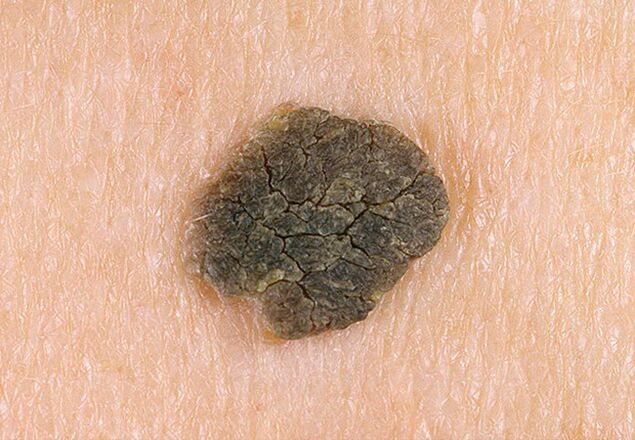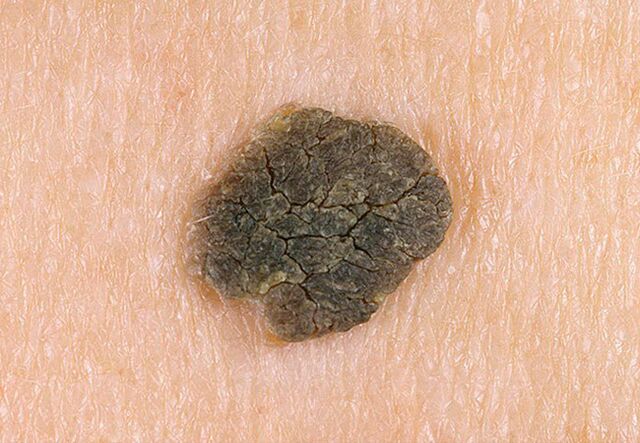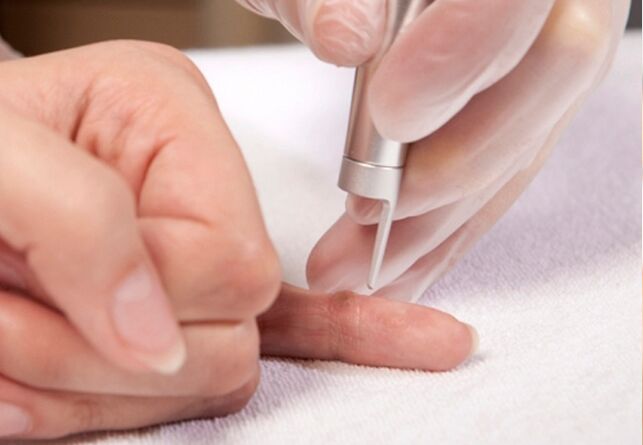Warts are nothing but a skin pathology that is not inflammatory in nature. The disease manifests itself in the form of benign neoplasms on the epidermis, the size of which can reach 10-15 mm. Neoplasms of this type do not have favorite places of localization, first a wart may appear on a finger, then on the face and legs. The unpleasant appearance of warts is the main reason why many women, as well as men, prefer to remove unwanted growths on the skin.
Clinical picture and characteristics of the disease

Warts are called rounded formations that arise on the surface of the skin as a result of excessive growth of the upper layer of the epithelium, as well as the papillary subcutaneous ball located immediately below it. Sometimes the appearance of formations is in no way related to the proliferation of the epithelium, because they can appear due to skin infection with the human papillomavirus (HPV). In any case, warts on the soles, hands, and face bring a lot of inconvenience, up to the development of psychological complexes, which is why the problem of dealing with them is quite relevant.
The size of the papule depends on its location and variety. The minimum formation size is 1. 5 mm, the maximum is 6 cm.
Note! Warts tend to coalesce, causing the size of the papules to increase significantly. The neoplasm takes a cylindrical or hemispherical shape, has a rather voluminous appearance and causes discomfort of a psychological and physical nature.
In the early stages of development, the color of the papule does not differ from the color of the skin, however, after a certain time, the formation becomes purple, and sometimes even black. Partly because of this color, warts are caused by dirt, which sticks perfectly to the rough surface of the formation. The change in color characteristics occurs many times faster if the warts are located on the legs.
What is the reason for the appearance of warts, the etiology of their occurrence?
When warts appear, the cause of development is the penetration of human papillomavirus infection into the human body.

More information! A person can be a carrier of the virus for a long time, but due to the absence of manifestations of pathology in the form of warts, do not even guess about it.
Methods of virus infection:
- the presence of wounds and microcracks on the skin contributes to the penetration of the virus inside;
- during close contact with a sick patient. Therefore, most often the disease is transmitted sexually;
- the use of hygiene products and belongings of a sick person can also lead to virus infection;
- you can get papillomavirus infection in places of public use, such as the gym, swimming pool, bathroom, sauna;
- if the mother is a carrier of the virus, it can be transmitted to the child during the latter's passage through the birth canal.
Important! In order to prevent the infection of the newborn with the papillomavirus, special attention must be paid to the treatment of the pathology during pregnancy.
Factors that contribute to the development of the disease:
- leading a busy lifestyle, frequent change of sexual partners;
- neglecting hygiene rules;
- weakened immunity. Even if a person is a carrier of the virus, strong immunity will not allow the latter to activate;
- frequent stresses;
- transmitted infectious disease;
- chronic fatigue;
- hormonal imbalance;
- avitaminosis;
- bad environmental situation;
- work involving the use of aggressive materials.
Types of warts
Depending on the characteristics of the warts and the symptoms accompanying their appearance, four main types of neoplasms are distinguished.
So, the types of warts:
- plain or simple;
- apartment;
- senile;
- pointed condylomas.
Let's stop in more detail on the features and characteristics of each type.
Characteristics of a simple wart
Characteristics of a common wart (common wart) include:
- the dominant place of localization is the back of the hand;
- papule diameter from 1 to 10 mm;
- Common warts usually go away on their own within two years and do not require special treatment.
A variety of simple warts is plantar (plantar warts).
Characteristics of plantar warts:
- warts on the legs appear more often in people who are characterized by excessive sweating of the legs;
- papules are mostly found in places of increased pressure of shoes on the skin;
- initially, the papule has a yellowish-gray shade, rough and uneven surface. Advanced stages of the pathology are characterized by a change in color to gray-dirty, significant compaction of the affected cover, its keratinization;
- warts on the legs are among the most painful. In some cases, the development of the disease leads to partial disability;
- as a rule, warts on the legs appear individually, but sometimes their number reaches 5-6. With the development of the disease, small plaques can merge, forming a mosaic wart.
flat warts or juvenile warts
The main difference between flat or youthful formations (flat warts) is the fact that these warts most often occur in children and adolescents.
Signs of flat nipples:
- smooth papule surface, size in diameter does not exceed 1. 5 mm. ;
- the height of the elevation above the nearby areas of the epidermis reaches 2 mm. ;
- the shape is round or irregular;
- places of localization - the outer surface of the hands, the skin of the face, the lower legs;
- the papule does not stand out very much on the surface of the skin, not only because of its flat shape, but also because of its light color (pink, flesh);
- The etiology of juvenile warts is related to exposure to external stimuli. Thus, the formation may appear at the site of a cut or injury to the skin.
Symptoms and characteristics of a pointed wart
Signs that characterize this type of warts, like condyloma (genital warts), include:
- pink growths that appear in the initial stages of the development of the pathology gradually merge with each other, forming a kind of growth located at the base that looks like a leg;
- the favorite place for the localization of warts of this type is the genitals, both of women and men;
- condylomas are transmitted by contact. The risk of infection increases if there are microcracks and wounds on the carrier's genitals;
- a pointed wart is characterized by growth, therefore, when the first signs of the disease are detected, immediately consult a dermatologist;
- condylomas are quite fertile ground for the manifestation and development of other pathologies of the inguinal zone. Thus, the lack of treatment in women can lead to the development of such a serious disease as cervical cancer.
Signs of seborrheic keratosis
Senile warts or so-called seborrheic keratosis: signs and features of education:
- characteristics of older people;
- the cause of the development of pathology is probably the defeat of the cells of the main layer of the skin;
- this type of wart has nothing to do with HPV;
- the most common manifestations of the disease affect the skin of the chest, less often - the face, neck, hands, forearms and legs;
- multiple nature of the formations, usually the number of keratosis elements does not exceed 20;
- predisposition to seborrheic warts is genetically transmitted;
- the minimum size of the papule in diameter is 2 mm, the maximum is 6 cm.
The clinic of a senile wart depends on the stage of its development and location on the body. In the early stages, they are flat spots with clearly defined edges, pink or yellow, covered with crusts that peel off easily. Over time, the crusts become rough, their thickness reaches two cm. With the development of pathology, the papules take the form of a fungus, become dark brown or even black.
The process of developing a seborrheic wart lasts more than ten years, but during that period no malignant transformations with papules occur.
Features of the treatment of warts

What you need to know when treating warts:
- it is completely impossible to get rid of a papilloma virus infection, it will remain in the body forever. The main task of the carrier is to deactivate the virus, transfer it to a latent form;
- the disease recurs;
- after removal of warts on the epidermis, as a rule, traces remain in the form of scars and scars;
- sometimes formations disappear on their own, especially in young patients.
Important! Identification of the first signs of warts should not cause panic, a timely visit to a dermatologist and the appointment of effective treatment will help to get rid of the signs of pathology and maximize the period of remission.
Traditional methods of getting rid of warts
Note! The therapeutic course is based on the use of classical drugs and techniques, however, in the early stages of the disease, clear success can be achieved with the help of traditional medicine.

Comprehensive treatment of warts includes the use of drugs of general and local action, as well as medical procedures.
Popular methods of getting rid of warts:
- laser removal of papules. It is considered one of the most effective and fastest methods, it does not hurt the skin;
- electrocoagulative method. Promotes the reduction of growths by exposure to high temperatures;
- cryotherapy or cauterization;
- surgical removal. This method is used extremely rarely.
Is it possible to get rid of warts with traditional medicine?
The following folk remedies have a beneficial effect in the treatment of neoplasms:
- celandine juice. It is used to cauterize papules;
- poultices and decoctions based on celandine;
- dandelion juice rub. Lubricate the affected areas at least three times a day;
- garlic and onion juice;
- medicinal infusion based on wormwood.
You can get rid of warts by performing cold procedures. Cauterization with vinegar gives a positive effect. However, when using vinegar or its essence, safety rules should be followed.
The appearance of a wart on the skin indicates disorders in the body, therefore, when the first signs of pathology are detected, it is recommended to consult a doctor in order to diagnose the disease and prescribe treatment.


















